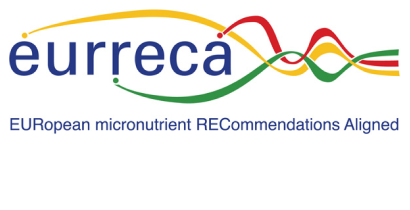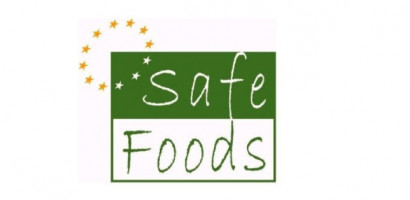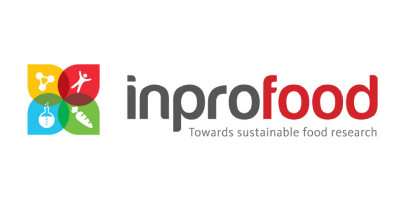On the road to harmonising vitamin and mineral recommendations in Europe (EURRECA)
Last Updated : 07 June 2012Micronutrients are vitamins and minerals needed only in small amounts but essential for health. The recommended intake to avoid deficiency depends on age, gender, genotype, physical activity, health status and the efficiency with which an individual absorbs and metabolises micronutrients.
Throughout Europe, recommendations vary widely with up to a twofold change in recommended dietary intake from one country to another. However, people’s physiological needs are not so different.1 In Europe, harmonising and aligning nutrition policy and public health strategies is an important goal. In the context of this harmonisation exercise, the 6 year EU FP6 Network of Excellence EURRECA (EURopean micronutrients RECommendations Aligned) has been established to identify and develop methodologies to standardise the process of setting micronutrient dietary reference values, as a basis for nutrient recommendations.
Populations have become more mobile and multi-national, making it more important than ever that recommendations are consistent throughout Europe. Inconsistencies may lead to confusion for policy-makers, health professionals, the food industry and consumers, pose difficulties for international food production/marketing, and ultimately prevent recommendations from reaching their goal of ensuring adequate intake.
EURRECA has developed a nine step framework outlining the ideal process for deriving Dietary Reference Values (recommended nutritional intake) scientifically, transparently and systematically. The steps can be grouped into four stages which can support the scientific alignment of setting micronutrient recommendations and provide a guide for experts, to ensure that all possibilities and options are considered.
EURRECA’s micronutrient requirement process framework
1. Defining the problem
The first phase of the process defines both the nutrition related health problem and the process of setting Dietary Reference Values. EURRECA has identified, compared and evaluated the existing published recommendations for micronutrients in and outside Europe, which are now collected in the web-based tool Nutri-RecQuest.2 This overview identified the micronutrients most in need of alignment. The prioritisation was based on the availability of new scientific evidence, the public health relevance and the heterogeneity of the recommendations.2 The 10 nutrients identified as most urgently in need of review are: vitamin D, iron, folate, vitamin B12, zinc, calcium, vitamin C, selenium, iodine and copper. EURRECA also attempted to better define the process of setting Dietary Reference Values through Scientific Advisory Bodies (SABs) or Nutrient Recommendations Setting Bodies (NRSBs).
2. Deriving dietary reference values
A systematic data collection should be carried out depending on the population group, micronutrient and health outcome that is under assessment. EURRECA proposes a well-designed and clearly defined systematic review methodology for the identification and collation of robust data. The transparency achieved in the data identification, collation and ultimately the analyses is a valuable strength. Data must then be summarised and interpreted using quantitative or qualitative analysis, assessing the quality of the data, and including certain elements of judgment. A qualitative scientific conclusion should result, informing decision-makers which data could be used to define micronutrient requirements. Current quantitative methodologies for deriving requirements do not generally integrate all potential data. EURRECA has developed a scientific framework to combine a maximum amount of all available quantitative evidence into one model.
3. Monitoring and evaluating
Valid information on the micronutrient intakes and status of a population as well as on the effect of micronutrient intake/status on health (relationship between intake-status-health outcomes) is fundamental for deriving micronutrient reference values. Through clearly defined processes, concepts, definitions and terminologies, EURRECA has established a series of approaches that assure the identification, and ultimately provision, of robust dietary micronutrient intake and status data. In addition, a set of Best Practice Guidelines were developed to aid identification of the most robust data for setting Dietary Reference Values.
4. Applying science to policy
Recommendations must be integrated with other considerations, such as feasibility, acceptability and cost-effectiveness. Relevant policy options should be mapped, models of nutrient-related consumer behaviour change identified, and current national issues and public health priorities considered. EURRECA’s Public Health Nutrition Policy-making Framework can guide future decision-makers in this process. Finally, policy instruments must be implemented and evaluated for their impact. Policy-makers must choose policies that are likely to contribute to achieving a desired health outcome for the population. The purpose of impact assessment, such as nutrient surveillance, is to assess any changes in the nutrition situation that can be attributed in part or wholly to a nutrition policy.
The EURRECA project hopes to achieve sustainability and impact by delivering tools and frameworks that are helpful in deriving and adopting reference values as well as delivering databases to institutional bodies and research networks that can build on them.
Further information
www.eurreca.org
EURRECA – EURopean micronutrient RECommendations Aligned Network of Excellence is funded by the European Commission (2007–2011), contract number FP6 036196–2 (FOOD) and co-ordinated by ILSI Europe.
References
- Doets EL et al. (2008). Current micronutrient recommendations in Europe: towards understanding their differences and similarities. Eur J Nutr 47(Suppl 1):17–40.
- Cavelaars AE et al. (2010). Nutri-RecQuest: a web-based search engine on current micronutrient recommendations. Eur J Clin Nutr 64 (Suppl 2):S43–7.


